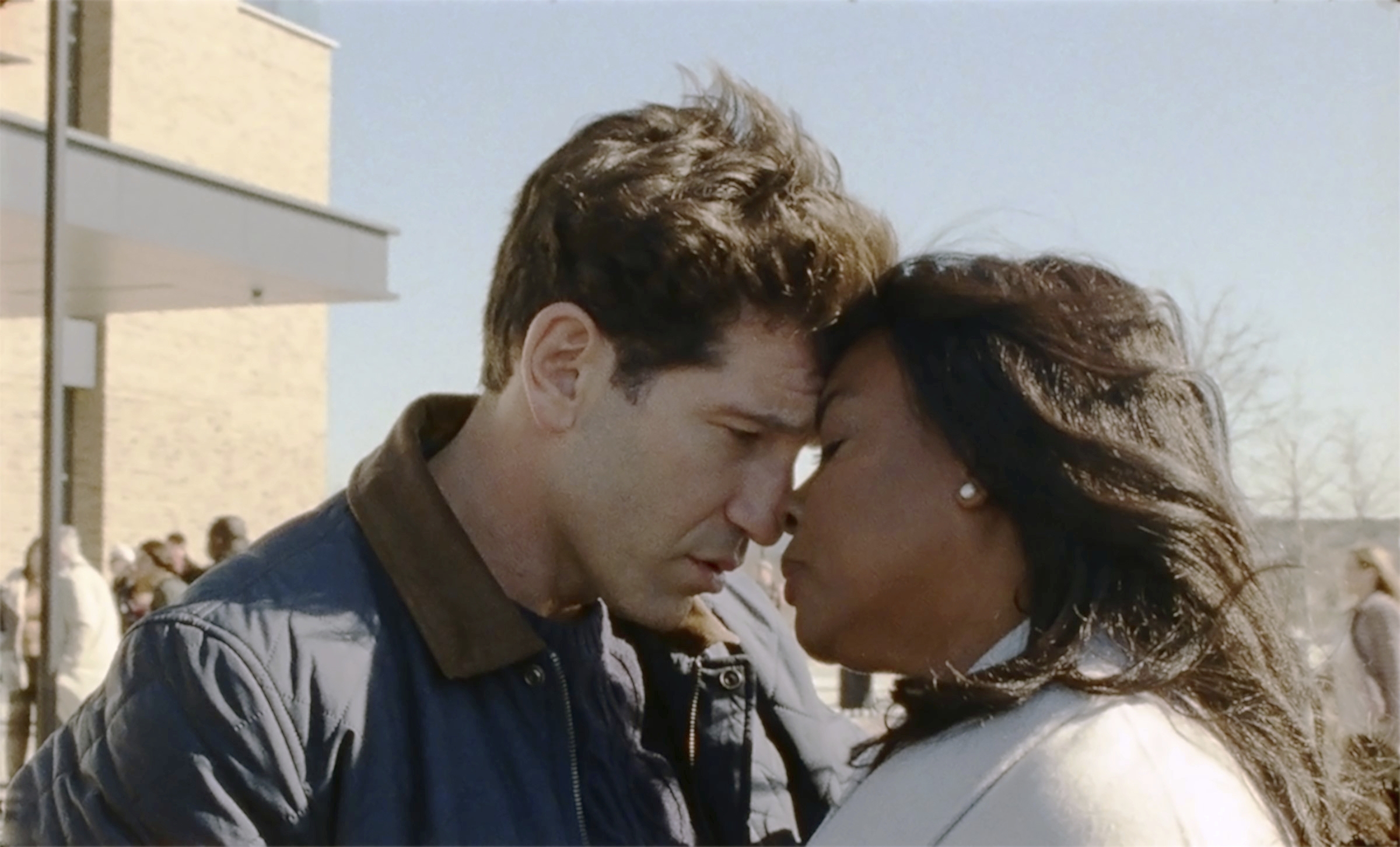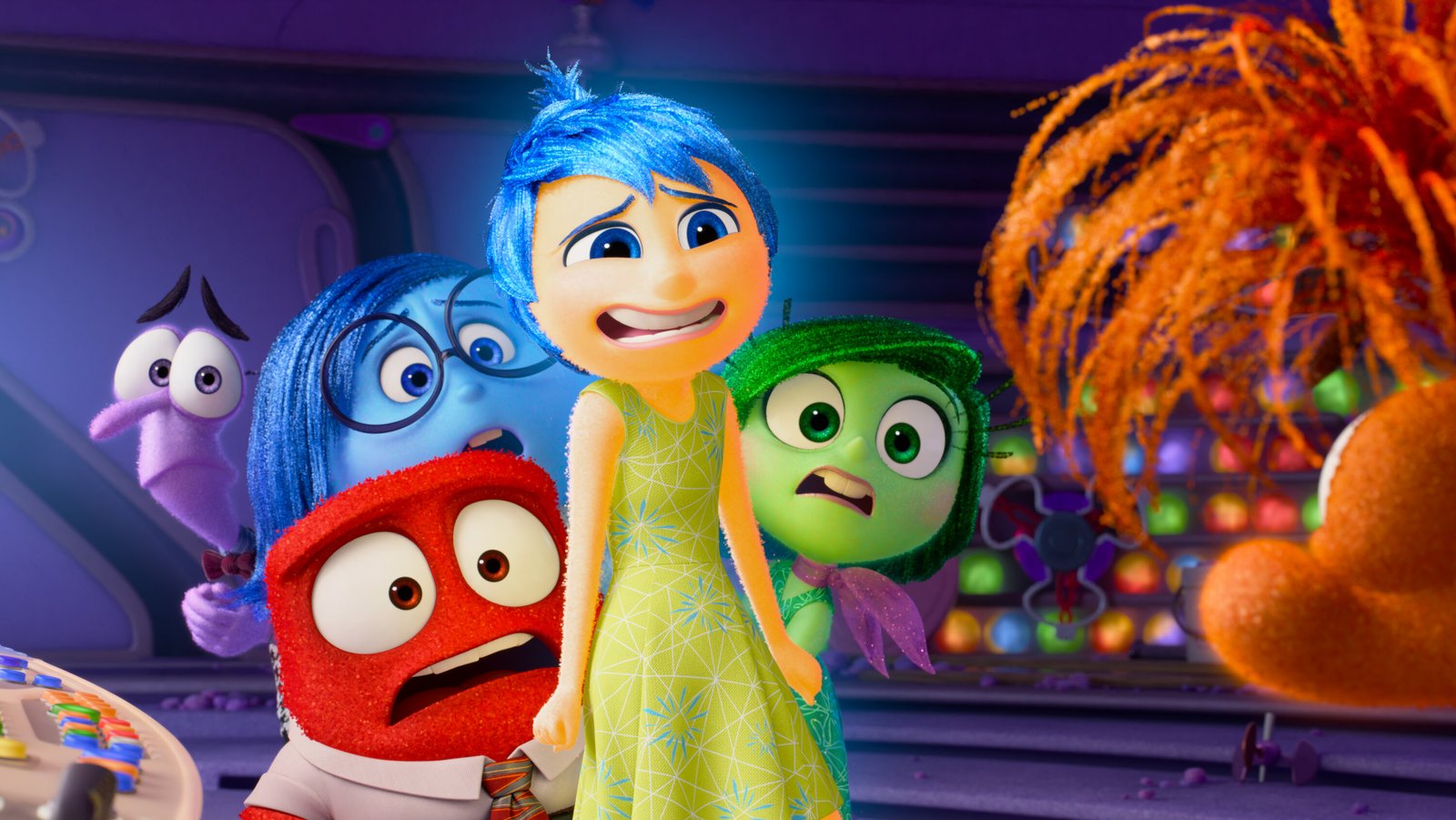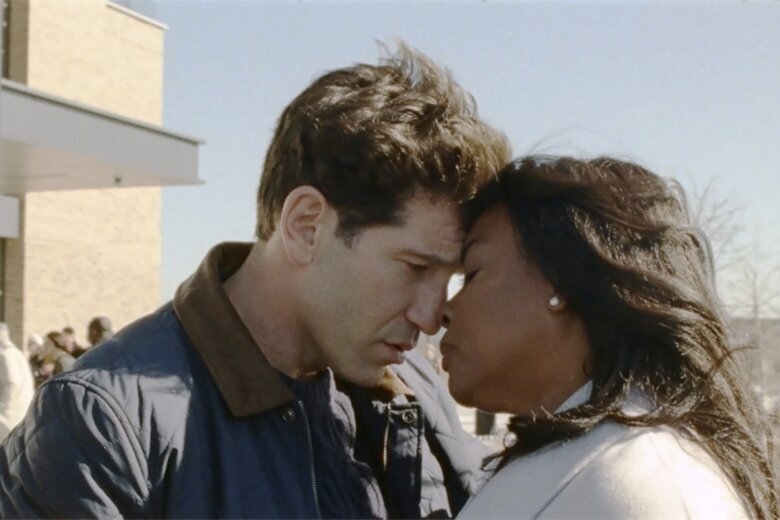Movie Reviews
Movie Review: ‘Origin’ is Ava DuVernay’s ambitious magnum-opus linking racism to global caste system – WTOP News

Ava DuVernay delivers her magnum opus “Origin,” which opened in movie theaters nationwide over the weekend just before Oscar nominations are announced on Tuesday.
WTOP’s Jason Fraley reviews Ava DuVernay’s ‘Origin’ (Part 1)
In her biopic “Selma” (2014), she depicted Martin Luther King Jr.’s quest to pass the Voting Rights Act. In her documentary “13th” (2016), she chronicled institutional racism in the U.S. prison system. And in her miniseries “When They See Us” (2019), she defended the falsely accused Central Park Five.
Now, Ava DuVernay delivers her magnum opus “Origin,” which opened in movie theaters nationwide over the weekend just before Oscar nominations are announced on Tuesday (more on that release strategy later).
Based on the 2020 book “Caste: The Origins of Our Discontents,” the film follows author and scholar Isabel Wilkerson as she brainstorms her next book idea after the success of “The Warmth of Other Suns: The Epic Story of America’s Great Migration.” As the first Black journalist to win the Pulitzer Prize for journalism, she embarks on her most ambitious project yet: a book linking racism in the U.S. to a larger global concept of the caste system.
Wilkerson is warmly portrayed by Aunjanue Ellis-Taylor (Oscar nominee, “King Richard”) with deeply human interactions, including an interracial marriage to her loving husband (Jon Bernthal), her ailing mom (Emily Yancy) and confiding cousin (Niecy Nash-Betts). She even has personable interactions with a plumber (Nick Offerman) wearing a red “MAGA” hat as she remodels her home in an allegory for repairing cracks in America’s foundation.
DuVernay opens the film with the 2012 killing of 17-year-old Trayvon Martin (played by Maryland native and Broadway Tony winner Myles Frost) by Florida neighborhood watchman George Zimmerman, who stalked the hooded teen despite police dispatchers telling him not to tail him. The way DuVernay films the scene, we know we’re in the hands of a filmmaking force, capturing window reflections and ominously showing a pack of Skittles.
She next shows Wilkerson traveling to Germany to visit the sites of former concentration camps before having dinner-table conversations comparing and contrasting the experiences of Jews in Germany during the Holocaust and Black folks in America during slavery. Here, the script is smartly written to draw vital parallels, but also where Wilkerson commits unforced errors, lamenting regrets in a phone call after dinner for key character growth.
Finally, Wilkerson visits India for the film’s most educational moment teaching audiences about the Dalits (“untouchables”), the lowest class in a nation ironically founded by a Dalit man, B.R. Ambedkar, who wrote the Indian Constitution and advocated for abolishing the caste system. DuVernay focuses on a statue of Ambedkar as a symbolic familiar image, while playing audio of MLK’s 1959 visit to India, relating to the Dalit struggle.
It’s super ambitious to try to tie historical and current events across different nations together into one cohesive film, but our reach should always exceed our grasp. It won’t work for everyone, especially if you favor a more traditional narrative structure, but I was on the film’s wavelength the entire time and admired the ambitious thesis as DuVernay’s magnum opus, combining the best of her skills both narrative (“Selma”) and documentary (“13th”).
Of course, we have to address the elephant in the room that “Origin” will be slammed by Rotten Tomatoes review bombers who don’t share the film’s political views. If you share the mindset of recent political candidates that racism never existed in America and can’t admit that slavery caused the Civil War, this movie isn’t for you. This is a film for open hearts and minds hoping to grow, learn and change to make America live up to its original promise.
It’s a shame that the film is being released so late. DuVernay is an awesome director consistently let down by a baffling release strategy. “Selma” was an instant classic destined to be shown in schools for decades, but the various guild screeners weren’t sent out in time, meaning many voters didn’t see it until it opened nationwide on Jan. 9. Thus, it earned a Best Picture nomination but missed for David Oyelowo as MLK and DuVernay as director.
Similarly, “Origin” just arrived last Friday, Jan. 19 after Oscar voting had already ended Jan. 16. Perhaps it’s following the strategy of “One Night in Miami” (2020) releasing Jan. 8 and “Judas and the Black Messiah” (2021) releasing Feb. 12, but I’m seeing less momentum from awards pundits. Local critics who saw it at the Middleburg Film Festival have been raving about it since October — I watched it on a Neon awards screener over the holidays — but I’ve had to hold my review until now when our WTOP listeners can actually see the movie here in D.C.
The fact that I can so vividly remember so much of “Origin” this many weeks after seeing it says a lot about the film’s power. And yet, I still think an October release like “13th” would have kept it in the awards conversation (“13th” would have won an Oscar that year if not for “O.J.: Made in America” being incorrectly classified in a movie category instead of the episodic television event that it was, a rule that was changed immediately afterwards).
Surely, Ellis-Taylor deserves a nomination for Best Actress, Bernthal deserves a nomination for Supporting Actor and DuVernay deserves nominations for Best Director and Best Adapted Screenplay, but I have a feeling that “Origin” will be snubbed in most every category when Oscar nominations are announced on Tuesday morning. Voters can’t vote on what they barely have time to see, an unfortunate self-fulfilling prophecy of snubbing.
The reaction to this is predictable. Left-leaning cinephiles will say it’s proof that the Academy is biased, while right-leaning detractors will insist that the movie just wasn’t good enough — which isn’t the case at all. “Origin” is a thoughtful, thought-provoking, award-worthy film that is a fascinating companion piece to “American Fiction.”
WTOP’s Jason Fraley reviews Ava DuVernay’s ‘Origin’ (Part 2)
Get breaking news and daily headlines delivered to your email inbox by signing up here.
© 2024 WTOP. All Rights Reserved. This website is not intended for users located within the European Economic Area.

Movie Reviews
‘Under Paris’ movie review: A shark tale lost in confusion and plausibility

Under Paris begins with a pre-title sequence where a group of marine scientists are dangerously close to a man-eating shark. Unsurprisingly, all but one member of the team survives the vicious attack. The surviving scientist, Sophia (Berenice Bejo), goes on to live far away in Paris with memories of the traumatic incident where she lost her husband. The shark, named Lillith for some reason, finds her way to Sophia once again after conservation activist Mika (Léa Léviant) spots her in the Seine River with a tracker.
From this point, director Gens seems confused about whether the shark must be treated as a monster or pet. This dilemma, which persists for an hour of the film’s runtime, is rather frustrating to watch. By the time the film makes up its mind, it gets hard to root for the protagonist, especially since good old logic seems to take a hit too.
Add to the proceedings a smug mayor (Anne Marivin), who doesn’t want anything hampering the triathlon Olympics in Paris, leaving you wondering how the Parisian cops let a bunch of 20-year-old activists foil their covert operation? It’s possible, sure, but the film needs to sell it. Even as the number of underwater deaths begin mounting, the Parisians are strangely devoid of any panic. Further narrative issues come in the way of a screwball subplot involving the discovery of active World War II artillery under the Seine. The shark may be kept under wraps, but how is the mayor keeping this a secret? Again, it’s possible, but the film does not attempt whatsoever to convince the audience of the plausibility of the premise.
Movie Reviews
“Inside Out 2” is Good, but is that Good Enough? (Movie Review)

When it was released in 2015, Pete Docter’s “Inside Out” was a seminal moment for Pixar. Coming on the heels of a pair of films that didn’t connect with audiences or critics in the same way that much of the studio’s earlier work had (2012’s “Brave” and 2013’s “Monsters University”), “Inside Out” saw Pixar out to prove they still had it. And as it turned out, they absolutely did.
After some decidedly unflattering discourse discussing the studio’s new penchant for favoring sequels and prequels over original material, “Inside Out” was an original film that hit every possible benchmark for success: it became one of the best-reviewed films Pixar had ever made, grossed just shy of a billion dollars, and won an Oscar. “Inside Out” is a truly stunning film, one that builds upon a bedrock of remarkably nuanced emotional intelligence to deliver an animated feature just as engaging philosophically as it is as a piece of entertainment.
Now, in 2024, Pixar is in a very different position. Despite the fact that the overwhelming majority of Pixar’s recent output has been incredibly well-received original films, these films have not been released in theaters. This is partially due to COVID-related lockdowns and partially due to Disney’s insistence on betting every chip possible on their streaming service, Disney+. As a result, films like “Soul,” “Luca,” and “Turning Red” (all of which are absolutely wonderful and unique works that deserve to be acknowledged as modern classics within the Pixar oeuvre) were not released in theaters and in their place, the aggressively lackluster films “Lightyear” and “Elemental” were. Thus, Pixar has been pushed back into a very similar corner, one in which their artistic and commercial viability has been questioned from every side, including parent-company Disney most of all.
So Kelsey Mann’s “Inside Out 2” finds itself being released to a scrutinizing media environment, trying to hit every possible quadrant for success once more, just like its predecessor. But does “Inside Out 2” have what it takes to live up to the critical, commercial, and cultural juggernaut that was the first film?
5. Weak Spot: Commodity Over Character
One of the first things to strike this writer as strange in the lead-up to “Inside Out 2” was the lack of returning creatives, both in front of and behind the digital camera. While Amy Poehler is back, as are several others, there are numerous highly notable absences that one does not typically see in Pixar sequels. Neither Bill Hader nor Mindy Kaling have returned to their roles of Fear or Disgust, respectively, and even composer Michael Giacchino, whose score for the first film has become so indelibly ingrained in the minds and memories of audiences, is woefully missing here.
This is all strange, given the lengths Pixar has gone to actively preserve these kinds of creative teams in the past. All four Toy Story films have kept the core voice cast involved as much as possible, and you don’t see Randy Newman not returning to score one of those sequels. In and of itself, this observation is not a problem, but it’s indicative of a larger systemic issue. “Inside Out” was a film about characters, and “Inside Out 2” flattens those characters into commodities in practically every way.
Part of this has to do with the sheer number of characters in “Inside Out 2.” By introducing four new Emotions to the cast, “Inside Out 2” is a far more crowded film, one that feels ultimately unable to devote worthwhile time to properly defining or developing its characters.
As an easy example, in “Inside Out,” Bill Hader as Fear felt like a real character. We spent meaningful time with him, both with the rest of the Emotions and in solidarity, and came to understand his role within Riley’s emotional state on many levels. In “Inside Out 2,” Fear is a caricature of Hader’s original performance. New voice actor Tony Hale does a great job, but the character himself is defined by the broadest strokes imaginable here, and it’s to the overall detriment of the character and the film. In juggling so many more characters and moving pieces, “Inside Out 2” loses the stark clarity, focus, and impact of the first film and muddies the central metaphor at the series’ core.
4. Maya Hawke as Anxiety
The one new emotion who truly shines in “Inside Out 2” is Anxiety, voiced delightfully by Maya Hawke.
Without delving too deeply into specifics to preserve some of the film’s later surprises, Anxiety’s role in the story stands out as a highlight where the emotional intelligence of “Inside Out 2” matches that of the first film. The portrayal of Anxiety manages to convey with genuine subtlety and nuance the ways in which anxiety can impact someone, especially during adolescence.
Maya Hawke’s vocal performance is exceptional, effectively capturing the complexities of Anxiety’s motivations. Supported by the strong writing of the character in Meg LeFauve & Dave Holstein’s script and stunning animation, Anxiety emerges as one of the most skillfully crafted and impactful elements of “Inside Out 2.”
3. Weak Spot: Maintaining the Status Quo
There are several instances throughout the runtime of “Inside Out 2” where it feels like the filmmakers are yearning to break free from the confines of delivering ‘another Inside Out’ and instead offer something beyond that preconceived notion. Throughout the film, concepts such as Riley driving herself without the influence of any Emotions, delving into the emotions that constitute the Emotions themselves, and exploring how one’s primary emotions evolve over time are all hinted at. However, disappointingly, none of these ideas are explored with any real depth.
Instead, “Inside Out 2” appears determined to cling to the status quo established by its predecessor, often to its own detriment. While these ideas suggest potential avenues for a transformative story involving Riley and her emotions, the film fails to fully realize any of them. Instead, the overarching theme of the film feels like a slight variation on the deeper theme of the first film. Similarly, the narrative of “Inside Out 2” feels deliberately reminiscent of its predecessor, lacking the imagination in staging, settings, or character development that made the original so memorable.
2. Weak Spot: A Lack of Imagination
The first “Inside Out” feels bursting with creativity, imagination, and monumental stakes. While the external story is simply about Riley and her family moving to a new city and her contemplating running away from home, the narrative feels almost mythic due to the meticulous interweaving of a propulsive narrative and profound themes by Docter and his team.
In contrast, “Inside Out 2” often feels oddly insular and small-scale in the wrong ways. While using a weekend away at hockey camp as the narrative’s core is not a bad idea, as it serves as a microcosm of Riley’s impending adolescence, the film fails to emotionally convey the magnitude of this event as effectively as it does intellectually.
This is exacerbated by an in-brain adventure for the Emotions that feels more like a straightforward task than the grand odyssey of the first film. While the first film also revolved around retrieving a MacGuffin, it did so to facilitate character growth and thematic exploration. In “Inside Out 2,” this narrative structure remains, but the essential components feel far more scarce and less impactful.
1. The Vault
The true standout scene of “Inside Out 2” revolves around a vault within Riley’s head dedicated to safeguarding her secrets. Within this vault lies a plethora of hilariously clever gags, including a recurring one that parents of very young children will undoubtedly find immensely enjoyable. What sets this sequence apart is its utilization of a mixed-media style of animation, which deviates from Pixar’s typical aesthetic in unexpected ways, enhancing the scene’s impact. There’s a genuine exuberance and innovative energy to this moment, which the film could have benefited from incorporating more extensively.
(B-)
“Inside Out 2” is a very well-made film. It’s funny, charming, and compelling, but it doesn’t quite reach the same level of humor, charm, and emotional resonance as the first “Inside Out” film. While it represents an improvement over Pixar’s previous theatrical releases, “Lightyear” and “Elemental,” it falls short of the artistic fulfillment and singular vision found in recent works like “Soul” by Pete Docter and Kemp Powers, “Luca” by Enrico Casarosa, and “Turning Red” by Domee Shi.
Although “Inside Out 2” isn’t a disaster, it feels like a movie that prioritizes mass appeal and accessibility over passionate storytelling and creative vision at every turn.
Movie Reviews
'Inside Out 2' movie review: Featuring the feels, their feats and then some

Nearly 10 years after the first instalment, out of the classic Pixar-Disney partnership, comes a peek into the life of a teenage Riley in the sequel to Inside Out. Much like its predecessor, the movie is intense, uplifting and, understandably, emotional.
The introduction of new characters — emotions and beyond — succeeds in keeping the audience guessing. True to form, the script and animation hold several inside jokes and lean heavily on wordplay. Amidst the dry, chuckle-drawing humour, the writers have also managed to pepper in more complex concepts. This imagery is likely to stick with you after the viewing, drawing reflections from the outside in, ironically.
Even in the innovation and progressing timeline, there is definitely a sense of familiarity. Characters navigate the mind landscape, and make an arduous journey with obstacle after obstacle, which sometimes does seem to drag on.
The voice cast powers this delicate script forward with noticeable nuance, despite some replacements and additions. Amy Poehler continues to be a convincing (and this time, a more likeable) Joy, while Maya Hawke’s Anxiety carries a nervous and excited energy central to the story.
The actors also manage to keep pace with the development of their characters into more multi-dimensional personalities. For those who enjoyed, related to and fondly remember the characters from the first film, the second offers great story arcs to love, alongside new fun introductions.
While Pixar’s bright, lively animation will work great to keep younger audiences entertained, depictions of mental health — particularly a panic attack — might warrant a conversation, context and maybe some reassurance for kids and teens. For older audiences, the movie can come off like one long session of therapy — loads of self-reflection, uncertainty, tears, awareness and hopefully, acceptance.
The story peels back the layers of the confusion, hopefulness and embarrassment of the teen years in a way that feels uncomfortable at times, and profound at others.
In all, Inside Out 2, holds tears, laughs and a slew of, “Oh, I see what you did there”. While it isn’t the most gripping watch throughout, it is thoughtful and sweet, making the film a lovely choice for a quiet day with family or friends. My top tip is to make sure you stick around for the post-credits scene (there’s more than one)!
Published 15 June 2024, 09:56 IST
-

 News1 week ago
News1 week agoWoman handcuffed in police car hit by freight train reaches $8.5M settlement
-

 News1 week ago
News1 week agoIsrael used a U.S.-made bomb in a deadly U.N. school strike in Gaza
-

 World1 week ago
World1 week agoEconomy, migration: Voters' main concerns ahead of elections
-

 Politics1 week ago
Politics1 week agoTrump campaign accelerates vetting of potential running mates
-

 Movie Reviews1 week ago
Movie Reviews1 week agoShort Film Review: Blue and White (2022) by Hiroyuki Nishiyama
-

 World1 week ago
World1 week agoWorld leaders, veterans mark D-Day’s 80th anniversary in France
-

 World1 week ago
World1 week agoFrance to provide Ukraine with its Mirage combat aircraft
-

 World1 week ago
World1 week agoRussia-Ukraine war: List of key events, day 833

















